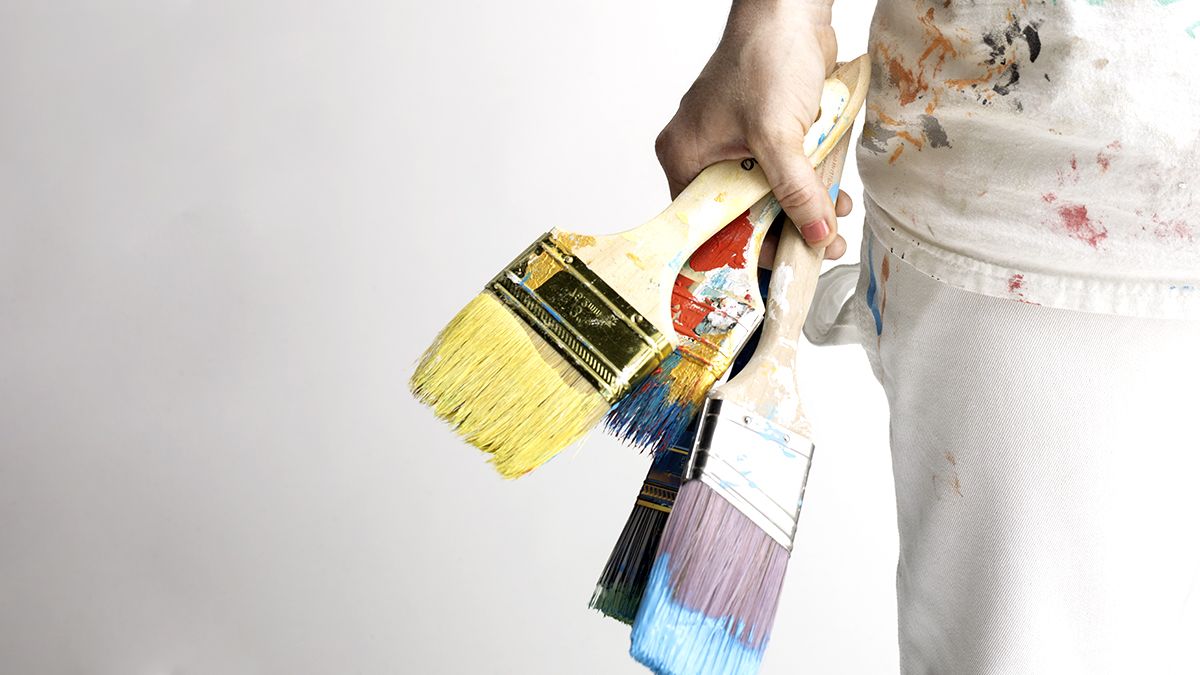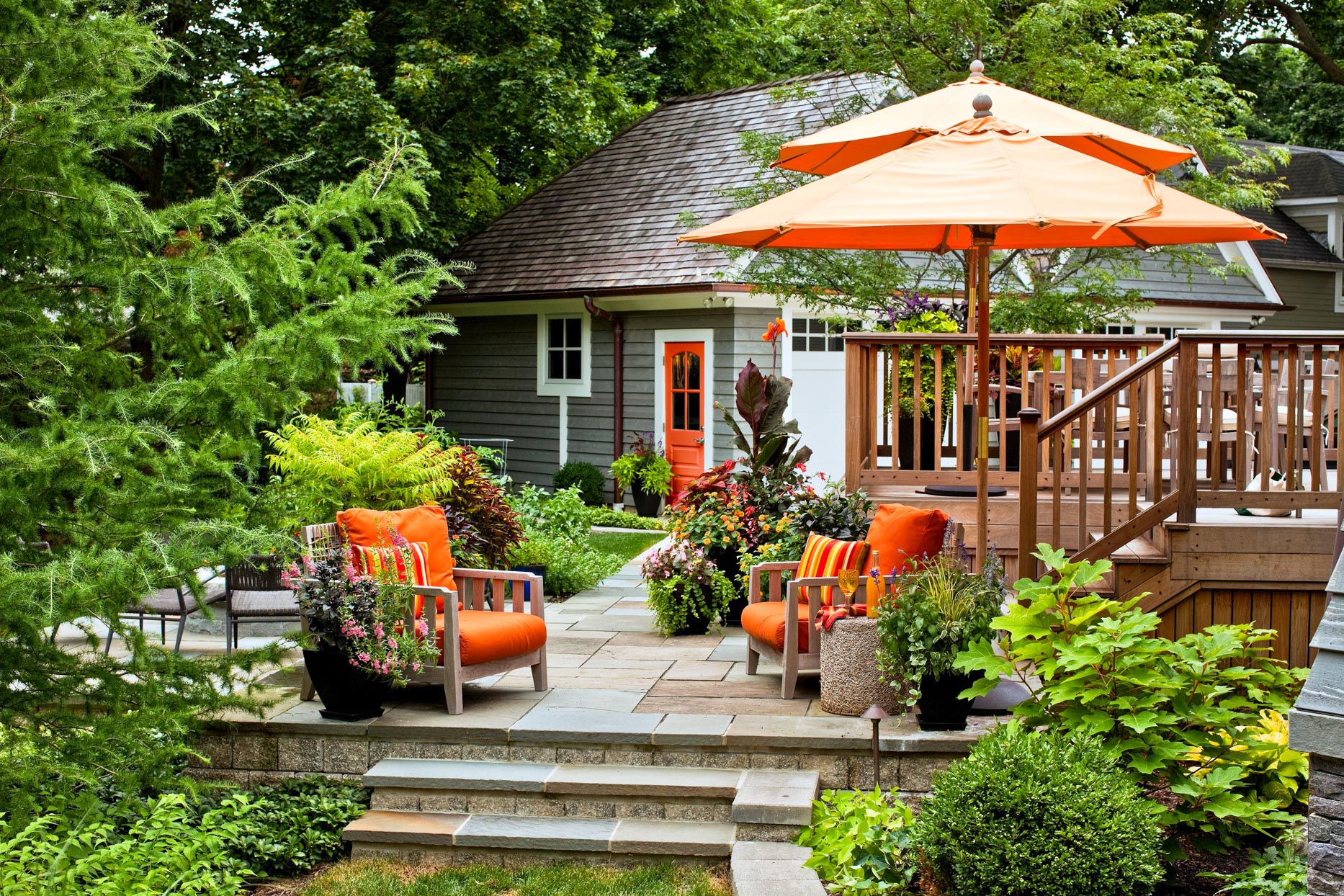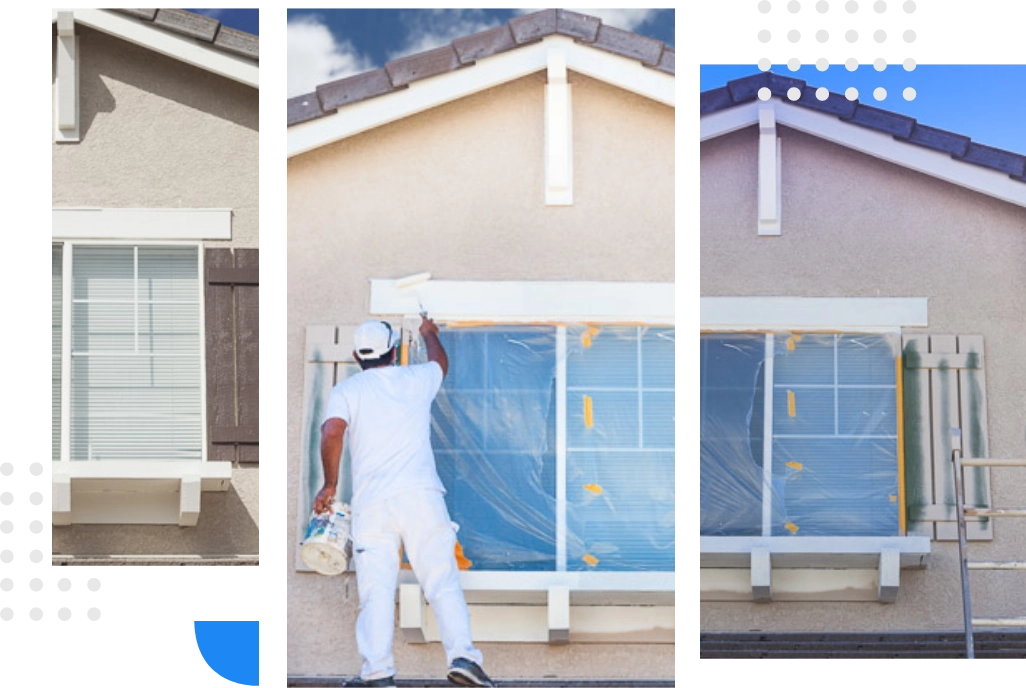The color and quality of paint used on a home’s exterior can make it last longer. However, proper surface preparation is also key.
High-quality paint may cost more upfront, but it lasts longer and requires fewer touch-ups. Plus, it’s usually easier to work with than low-quality paint.
Preparation
A lot of work goes into a good exterior paint job. The prep work is the most important part of a painting project, and neglecting this phase can cost you in time, money, and a sub-par finish.
The first step in the house painting process is to thoroughly clean the surface with a power washer and a high solution of bleach or sodium hypochlorite (with no phosphate). This kills the mildew, moss, and other living spores that can compromise the durability of your paint.
It is also a good idea to use this time to repair small cracks and holes. This will prevent future water damage and rot. Then a wood filler will be needed to create a smooth surface that can hold the new coat of paint. Also, if any nails have popped out, this is the time to hammer them back in place. This is an opportunity to fix any rotting sections of trim or siding as well.
Primer
A primer coat is necessary to protect the underlying surface and make it easier for a finishing paint to adhere. Without the initial undercoat, a top coat may absorb into the material and distort its color, causing discoloration and ruining your finished paint job.
You can purchase a variety of different types of primers to meet your specific needs, including oil-based and latex. A clear or white primer grips the surface and helps even out its porosity, while tinted ones hide vivid wall colors (Photo 2).
Some stain-blocking primers prevent “tannin bleed,” in which natural tannins in red cedar and redwood seep into paint and cause reddish-brown discoloration. Also, if you plan to paint over vinyl siding, consider using a vinyl-safe primer. These products contain lower VOCs, or volatile organic compounds, which reduce the amount of harmful fumes you breathe during application. The primer phase is also a good time to repair and replace loose or damaged materials, like rotted boards or shingles.
Base Coat
A good base coat enhances the wood grain, allows moisture to escape and protects against sun/UV damage. It also helps control mildew and rot that may otherwise compromise the integrity of the wood.
Base coats contain plasticizers to add flexibility, so the paint can bend and move with the wood. They also include cellulose chemicals that bond with the wood to create an effective double-sided seal.
Aside from beautifying your home, a fresh coat of paint can repair minor cracks and peels, protect against the weather, increase your property value and deter pests. Pests tend to avoid areas that are painted, and certain shades of paint can deter specific pests, like mosquitoes and birds, from nesting around windows and doors.
The color choice you make will also affect the longevity of your painting job. Light neutrals will require fewer coats, while darker colors will fade more quickly, costing you money in the long run. Aim for a classic, crowd-pleasing hue that will look great now and still be buyer-ready when it comes time to sell.
Top Coat
As it ages, exterior paint slowly oxidizes, and each rainfall washes off a minute amount of its surface. That’s a good thing, because it helps protect the wood underneath and keep it from rotting. But it also means that every time it rains, a thin layer of chalky residue is washed off the paint and into the surrounding soil. The latest alkyd paints control this shedding, reducing the need for re-coating.
Modern acrylic latex is more elastic than earlier types, which prevents cracks from forming with temperature changes. It’s also more vapor-permeable, which reduces peeling and staining.
A fresh coat of House Painting Exterior Coating will beautify and transform your home. It will also help to protect it from the elements and keep it looking its best for years. If you’re thinking of selling your home, a new coat of paint may even increase its value. And if you’re keeping up with the maintenance, it can be done for much less than other remodeling projects.



